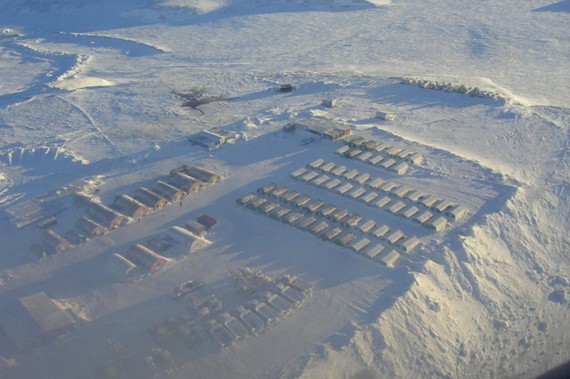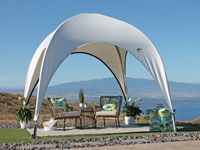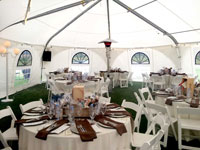The McMurdo Research Station, located on Ross Island in Antarctica, is the data center of the U.S. Antarctic Program.
McMurdo Research Station Today
McMurdo began as a naval air facility and international research station and became an outdated and shabby research camp. If you take the trek down to McMurdo today, you will find an incredible community. Yet, people are living in an area that looks like a run-down mining town. Since 1956, buildings have been added to the grounds as needed and according to available funding. Multiple storage facilities span the campus instead of one central storage location. Residents of dormitories, which are poorly designed, have no personal space or privacy.
McMurdo Research Station, originally thought of as a research facility, was still not habitable during the winter months. These days, at least 150 people live on the island during winter. In the summer the population goes up to about 1,200. While the temperature drops to 50 degrees below Fahrenheit some days, the camp still operates. People must face the cold and bursts of snow in order to get from one building to another.
Architect Magazine ran an article in 2013 following an assessment of the island to implement a master design for improvement. While McMurdo Research Station is not exactly a ski resort, facilities must be in good shape. Furthermore, one of the leading arctic research camps dedicated to studying problems of global importance should be functional.
Time for a Change
As of December 2015, there is a plan underway to completely update most of the camp. The project would need an estimated $300 million budget. Set to start in the fiscal year 2019, it will take eight years to complete. Many who work with city design and development will agree: McMurdo needs streamlining. Around 91 of the current buildings will merge into a mere 21. The fewer operational staff needed and fuel used leads to better use of resources and supplies. The plans include new living quarters, dining facilities, workspaces and even a fire station.
Get the Ball Rolling!
What happens during those eight years of construction? Current residents and researchers will move out or reroute the campus to complete their daily duties. Why not fast-track the construction by temporarily relocating some of these arctic research structures into fabric buildings? High-quality tension fabric buildings are relatively quick and easy to set up, yet very strong and durable.
- Alaska Structures fabric buildings are able to withstand hurricane-force winds.
- Manufactured from arctic-grade materials that can withstand temperatures as low as -60˚F.
- Customizable with trademarked insulation to any R-value
- The HGB and SQ Series are designed for Arctic exploration and research camps.
Every structure uses an extremely durable thermoplastic fabric coupled with high-strength aluminum or zinc-coated steel architectural supports. The structures require little to no upkeep, as a result, cutting maintenance costs down to a minimum. In addition, they are easy to repair and portable when needed. The structures include electrical systems, insulations, windows, and doors. All of the necessary building parts are available, yet the construction costs and building times are more than ideal.
The plans drafted; the temporary fabric structures are at hand. It’s time that we move forward with the construction and overhaul of the McMurdo Research Station.
Do you want more information on arctic exploration and research camps? You can also order your Alaska Structures fabric buildings, call +1-907-344-1565, email us, or contact us online.

















































































Leave a Reply